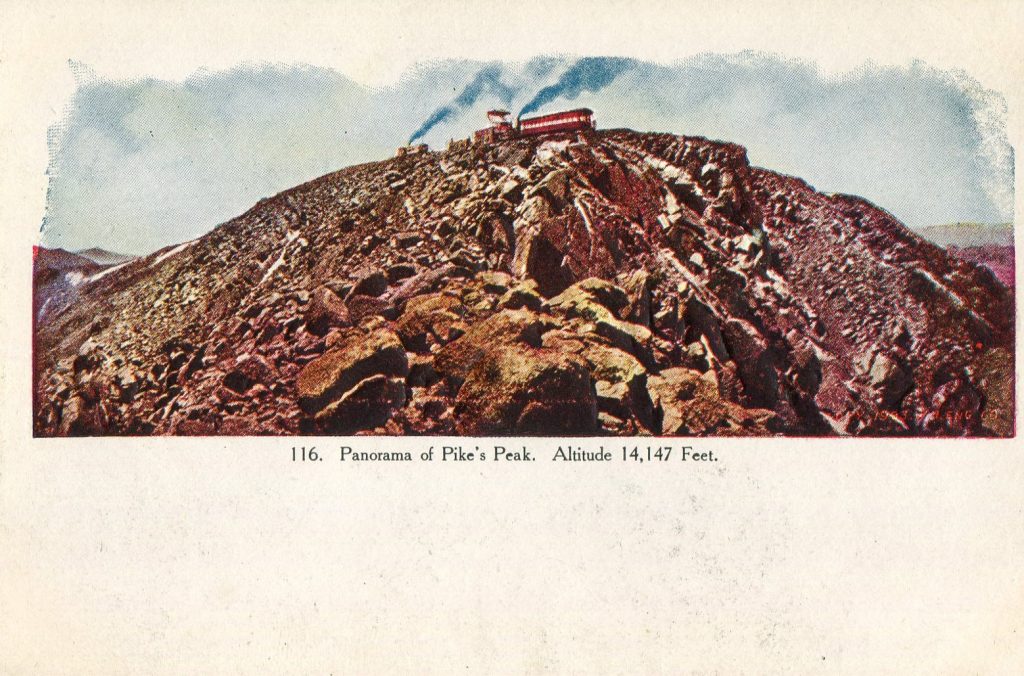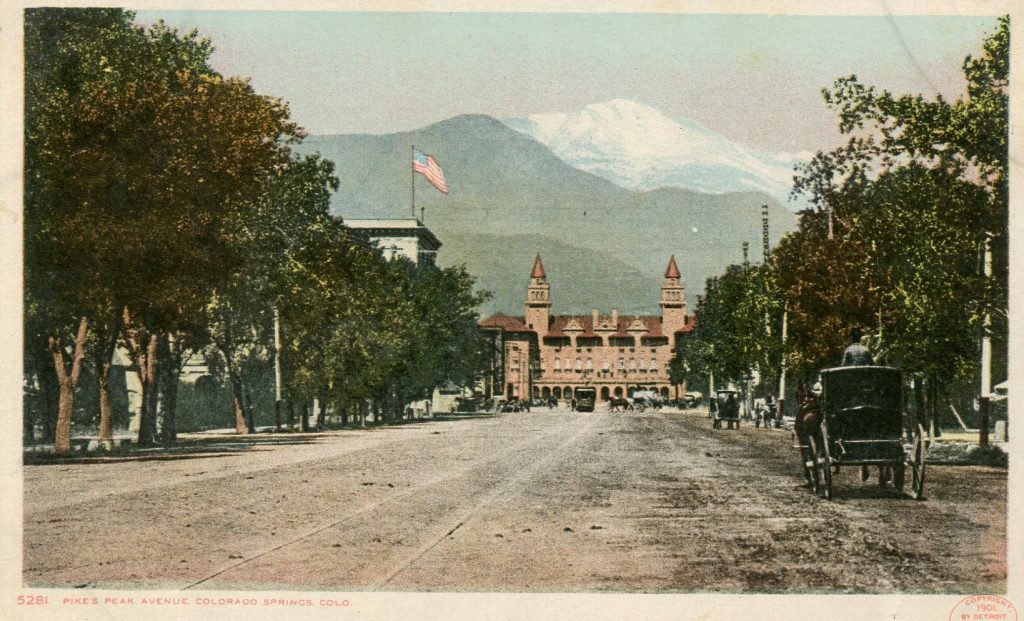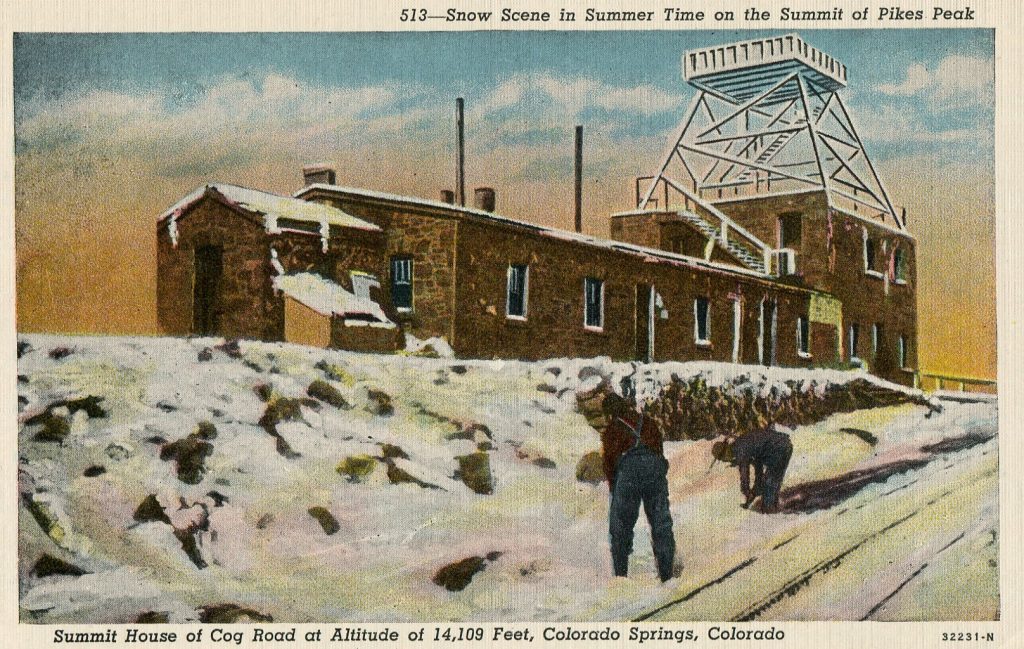Editor’s Staff
Pikes Peak
America’s Mountain

Do you know what a Fourteener is? In the state of Colorado there are 53 of them. A “14er” is a mountain that is at least 14,000 feet high. Pikes Peak, with an elevation of 14,115 feet is one of them. Found during the first official exploratory expedition in 1809, this favorite among American mountains is part of Colorado’s Front Range.
The first peoples to inhabit the area came long before the Spanish explorers. The ancients had names for everything, but we know the Spanish names since they had an affinity for naming places using easy to remember colors. For example, “Rio Colorado” or the Red [colored] River – later the Colorado River factored into the naming of the Territory and even later the State.
In the early 1800s and during his presidential administration, President Thomas Jefferson ordered the formation of four exploratory expeditions. The most famous one was the Lewis and Clark Expedition that was tasked with surveying the northwestern part of the Louisiana Purchase. Others led by William Dunbar and Dr. George Hunter (mostly in Arkansas and Louisiana) and Thomas Freeman and Peter Custis (along the Red River in Texas) never achieved notoriety. The last of the expeditions led by Zebulon Montgomery Pike did succeed but also resulted in the capture of its leader and most of its members by the Spanish authorities in the southwest.
True or otherwise that those years in American history have been neglected in many history books, Jefferson’s experience in foreign affairs led to the most significant land purchase in history – the 1803 agreement with the French known as the Louisiana Purchase. As part of that sale the United States acquired the mountain the Spanish called El Capitan and was then the home of the Arapaho. It was they who greeted the American expedition led by Lieutenant Zebulon Montgomery Pike. Today Pikes Peak affectionately known as America’s Mountain, is on the National Park Service list of Historic Places.

Pikes Peak is among the nation’s most famous mountains. It has attracted visitors since the early 19th century and remains one of the most accessible mountain summits in the world. You have options at Pikes Peak. A road was built in 1877, so wagons and later driving a car became the most popular, or you can take a bus tour. A cog-railroad was completed in 1890 and was an immediate success. Or you may hike the Summit Trail. There is also a choice that goes only downhill. You take a motorcoach ride to the top, then join what is called a Challenge Group to cycle down the paved highway enjoying the wind in your face.

Getting to the summit has not always been so easy. Zebulon Pike failed in his only attempt to reach the top. Pike and his party made a poor decision in trying to climb the peak in November. The temperature difference was left out of the decision and the first try ended in failure because of the weather. In fact, the summit was not attained until 1820 when Edwin James climbed it at a better time of the year. In his day, James and his party did not find it to be an easy climb, but they managed the summit by sunset of the second day.
For a while, the peak would be named after James, but Pike’s legacy endured. At first it was Pike’s Peak, then eventually Pikes Peak, as we call it today. If you were reading Postcard History on November 8, 2020, you may remember how the United States Post Office committed the terrible act of Apostrophe Eradication.
Weather extremes on Pikes Peak are legendary. And extreme! Twenty-inch snow storms in August were commonplace. (Lately not as much, but just as frequent.) Lightning strikes (during snow storms, as well as rain) are so frequent that special ‘grounding equipment’ had to be installed to keep the railroads running. It has snowed in every month, except one, since weather record keeping began in 1873. The monthly average wind-speed at 3 PM daily is 19.4 miles per hour. Temperature differences have reached 103 degrees in one calendar year, from 64° in July to -39° in December.

If you find little amusement in all of this and you clamor for the out-door life, Pikes Peak is also home to the Pikes Peak Marathon and Pikes Peak Cycling Hill Climb, but by far the most popular spectator event each year is the Pikes Peak Hill Climb, an automobile race to the top since 1916.
The race measures 12.42 miles. It climbs 4,720 feet from it start at the Mile 7 Post. This race is against the clock; currently the record time is 9 minutes, 52.819 seconds. It includes over 150 turns. The use of turn signals is not required.
* * *
Pikes Peak is not immune to silliness. Some of the nonsensical things that have happened include the day in March 1929 when Bill Williams, of Hondo, Texas, pushed a peanut to the summit with his nose via the Pikes Peak Highway.
And, in 1949 when Larry Hightower of Ellensburg, Washington, pushed a wheelbarrow to the summit.
Or, when as a publicity stunt, a local piano mover pushed a 550-pound Steinway piano uphill for the last seven miles of the Pikes Peak Highway.
Finally, you’ll like this one. In 2004, Crayola Company of Easton, Pennsylvania, created a limited edition 64-color-box set including a Crayola alliteratively named Pikes Peak Purple.
I had never heard of the Dunbar-Hunter and Freeman-Custis expeditions. Interesting that Pikes Peak became Colorado’s most famous mountain despite the fact it’s far from the tallest (Mt. Elbert reaches an elevation of 14,440 feet) in the state.
It was my understanding it is because the Great Divide goes through the peak, but I could be wrong.